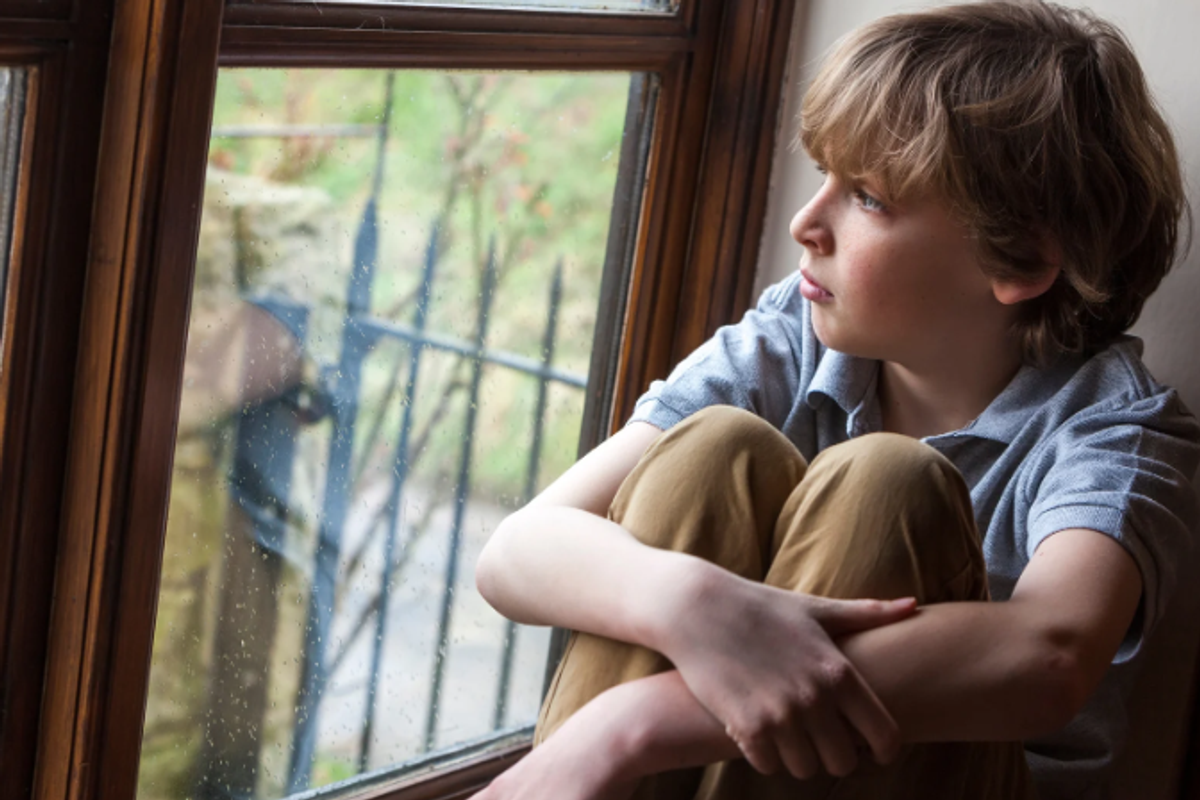Shocking new poll shows just how incredibly sheltered kids are these days
Seventy-one percent of 8 to 12-year-olds have never held a sharp knife.

A young boy staring at out the window.
If you compare parenting in 2025 to what it was in the ‘70s or ‘80s, there are some glaring differences. The first is that back in the day, kids were allowed to explore more on their own. It was common to see seven- or eight-year-olds walk home from school alone, and some were latchkey kids who came home to an empty house until their parents got home.
However, there has been a significant cultural shift, where the family has become increasingly centered around children, and parents are more concerned than ever about their kids’ safety. Even though the overall crime rate in America is much less than it was forty years ago. The effects of these changes are apparent in a shocking new Harris Poll about eight to twelve-year-old American children.

How sheltered are 8 to 12-year-olds?
45% have not walked in a different aisle than their parents at a store
56% have not talked with a neighbor without their parents
61% have not made plans with friends without adults helping them
62% have not walked/biked somewhere (a store, park, school) without an adult
63% have not built a structure outside (for example, a fort or treehouse)
67% have not done work that they’ve been paid for (e.g., mowing lawns, shoveling snow, babysitting)
71% have not used a sharp knife
The problem with raising sheltered kids
The poll results are alarming because children raised without freedom and real-life experiences are likely to have a tough life as adults. Sheltered children become adults who have a hard time making decisions, connecting with other people, and overcoming challenges. Sheltered children also grow up lacking individuality and confidence. It seems that the intense need to protect children winds up making them terrified as adults.

How to raise children who aren’t sheltered
Jonathan Haidt, social psychologist and author of The Anxious Generation: How the Great Rewiring of Childhood Is Causing an Epidemic of Mental Illness, says one way to raise confident, independent children is to give them jobs outside of the house. "Practice letting your kids out of your sight without them having a way to reach you. While you cook dinner for your friends, send your kids out with theirs to the grocery store to pick up more garlic—even if you don't need it,” he told NPR.
Haidt believes that when children are seen walking to the store to get milk, it transforms them, as well as the community. “The brilliant part of this challenge is that it changes the norms. Before you know it, it's normal to see an eight-year-old carrying a quart of milk. It's normal to see a nine-year-old on a bicycle—that's how you change the norms,” Haidt continues.

He also suggests that parents should print out kids' licenses, similar to the ones available here, so they can demonstrate their independence if questioned by adults.
Raising kids who are resilient, capable, and emotionally mature begins when parents loosen their grip and allow them more freedom and trust. For many, this may run counter to their instincts, but it's necessary to raise well-rounded kids. Furthermore, in a world where many children are sheltered, those with a greater sense of individuality and confidence will have a distinct advantage when they enter the hyper-competitive adult world. In the end, well-adjusted competent adults are built not by shleting kids, but by setting them free.
- YouTube www.youtube.com


 Row of boarded-up homesCanva
Row of boarded-up homesCanva A man walks down a alleyCanva
A man walks down a alleyCanva Edward Jenner, certified stud.By John Raphael Smith - [1] [2], originally uploaded to en by User:Magnus Manske, Public Domain
Edward Jenner, certified stud.By John Raphael Smith - [1] [2], originally uploaded to en by User:Magnus Manske, Public Domain Vaccines changed everything about human longevity. Photo by
Vaccines changed everything about human longevity. Photo by  Infographic by designer Leon Farrant based on 2012/13 data. image from Leon Farrant
Infographic by designer Leon Farrant based on 2012/13 data. image from Leon Farrant  Two women chatting in front of a fire. Credit: Atlantic Ambience/Pexels
Two women chatting in front of a fire. Credit: Atlantic Ambience/Pexels Two guys chat at a cafe. Credit: Helena Lopes/Pexels
Two guys chat at a cafe. Credit: Helena Lopes/Pexels Stephanie Tanner: iconic middle child.
Stephanie Tanner: iconic middle child.  Joe Jonas: the best Jonas?
Joe Jonas: the best Jonas?  Malcoln knows the struggle intimately.
Malcoln knows the struggle intimately.  Jan had a hard time getting over her jealousy of the older Marcia.
Jan had a hard time getting over her jealousy of the older Marcia.  A mother helps her daughter with the computer. Credit:
A mother helps her daughter with the computer. Credit: